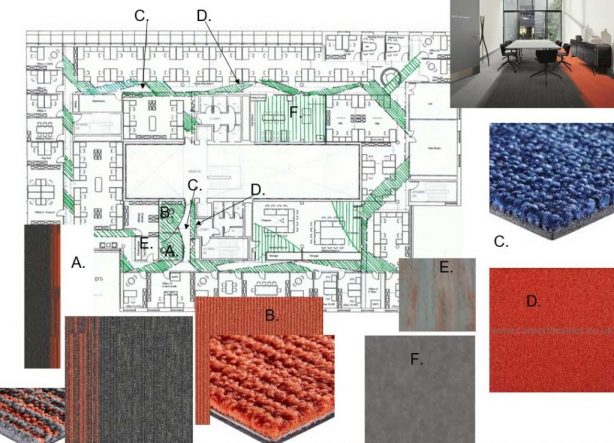Table Of Content

Christie graduated cum laude from Woodbury University with a bachelor’s degree in Interior Architecture and a minor in Art History. She likes mixing styles and adding modern touches to classic forms, so that her designs are both fresh and timeless. Ashley Manhan obtained her degree from UCLA while simultaneously employed at a well-respected firm in Santa Monica where she was immersed in high-end hotel and resort design. The firm’s high profile clientele included Starwood Hotels & Resorts and Kimpton Hotels & Restaurants amongst others. She would later join, and quickly move up the ranks, of hospitality pioneer sbe Entertainment. Ashley was also immersed in the design of numerous notable restaurants including the Bazaar with celebrity chef José Andrés, a Michael Mina restaurant in Hollywood and Katsuya LA Live in Los Angeles.
Creating a Luxurious Multi-Functional Space: Kitchen and Dining Room Combo
Interior designers go through years of training in order to recognise both potential and challenges when doing space planning. Perspective, perception and utilisation are all dependent on size. The same applies to the interior design solutions that will be chosen and executed in the respective area. Size refers both to the area and the volume of the space (both horizontal and vertical planes should be taken in account). Use these top tips to ensure any room space planning you do produces effective results. It’s important to note that space planning isn’t a rigid process though.
Space Planning 101: How to Design Efficient Spaces
Permanent fixtures, such as windows and doors, are an important consideration when designing a space. This can be achieved through the use of built-in storage solutions, such as shelves and cabinets. You need to provide enough storage solutions to meet the needs of the occupants, without cluttering up the space. Providing customize house interior and exterior design to clients in order to build their dream home.
This Tiny Home In A 17-Foot Wide Lot In Toronto Is Redefining Urban Living
Make sure to consider how people will move through the room and create a layout that allows for easy movement. One of the most important tools used in spatial planning is the bubble diagram. A bubble diagram is a simple sketch that shows the relationship between different areas in a space. It helps to identify the flow of traffic and create zones for different activities. Here’s a simple example of how this happens – you cannot stuff an oversized sofa in a tiny living room. Such design elements aren’t going to be balanced, throwing off the proportions of the space.
10 Best Free Interior Design Software for 2024 - G2
10 Best Free Interior Design Software for 2024.
Posted: Thu, 15 Feb 2024 08:00:00 GMT [source]
Achieving visual balance involves distributing visual weight evenly throughout the space to create a harmonious and pleasing environment. In the next section, we will delve into the principles of effective space planning. The key to a successful design job starts with determining the purpose of the space being designed.
Whether you’re undergoing a complete renovation project, are designing the interior of a new build or simply want to re-design a few rooms in your home, good space planning is essential. It helps you solve problems and find better solutions before they become a headache and aids you in creating a more cohesive, comfortable and functional home. Space planning in interior design is more than simply deciding where to put furniture; it’s about creating harmonious functional spaces that are all used to their best and fullest potential. Space planning is how interior designers create and plan the layout and function of all your interior spaces to design homes that are highly functional and look and feel good. Space planning occurs before the actual interior design process; it is a plan for interior design. Room planning ensures that an interior designer adheres to the room’s purpose, functional requirements, and layout.
Each area within a room should be designed with its specific function in mind, whether it’s a productive workspace or a cozy relaxation corner. Interior designers can utilise various tools and resources that aid in visualisation, measurement, and organisation to create efficient space plans. Sir Winston Churchill once said, “We shape our buildings; thereafter, they shape us”. The spaces surrounding us are more than mere structures – they can transform our thoughts, emotions and moods, ultimately shaping how we lead our lives. When our living spaces are thoughtfully designed and constructed with meticulous attention to detail, they significantly enhance the quality of our lives. On the other hand, clumsily designed and poorly executed spaces can lead to feelings like despair, lethargy, anxiety and severe mood swings, hampering our day-to-day functioning.
Before embarking on any interior design project, it is crucial to conduct a thorough evaluation of the available space. This involves carefully assessing the size, layout, and existing architectural features of the room or area. Many rooms have natural focal points, like a fireplace in a living room, that we can plan around. DH’s design collaborator, Katie Monnin’s, design pet peeve is when it’s apparent that each room was designed individually without taking into account the overall flow, function and feel of a home. We always consider the whole when we’re space planning to ensure a cohesive final design.
Why is space planning important for effective interior design?
Consider the size of the furniture, fixtures, and other elements in relation to the size of the room. The amount of space available and the volume of the space can impact the layout and functionality of the space. It’s important to consider how the space will be used and how to make the most of the available space. The space plan will also define the circulation patterns that show how people will move through space. For over a decade we’ve been offering a discrete search-and-rescue service that includes picking up where other design teams left off.

To address this issue, it’s crucial to optimize every available space. In the contemporary era of interior design, the focus has shifted towards planning and adapting to small spaces, mobile housing, multi-use spaces and furniture. As more people yearn to experience city life, it’s imperative to make even the smallest spaces comfortable. The Symington Laneway Suite, situated in Toronto’s Junction neighborhood, is a quintessential example of innovative space utilization and modern interior design. Pranav is the Director of Architecture & Design at Avenue Interior Design.
After recognizing a deep appreciation for beautifully designed interiors, Daphnie subsequently focused her design talent and entered the world of interior design. From an early age co-founder Andrea DeRosa appreciated anything well designed. Extensive travel and study abroad experiences ignited her inherent creative interests and ultimately solidified her career path in interior design. Upon graduating from the University of Wisconsin – Madison with a degree in Interior Design, Andrea relocated to Los Angeles to practice Hospitality Interior Design at various notable firms throughout the city. As Co-Founder of Avenue Interior Design, Andrea has become focused on project concept generation, business development, and marketing for the company since its foundation in 2009. Our team provides project management services, planning / consulting, and complete furnishings in a variety of styles, sizes and colors that complement all budgets.
Get the inspiration for Household design with Planner 5D collection of creative solutions. If your client is differently-abled or has made the decision to age in place, you will have to plan ahead to offer them as much freedom and convenience in their home as possible. When it comes to outlets and switches, strategic placement is key. With these space utilisation and optimisation strategies, every inch of the available space can be leveraged effectively. Questions from clients will help you think, rethink, and reimagine your perspectives. For professionals in the creative sphere, that is a reward in itself.
Good space planning allows for some flexibility and change through the years. When this happens, you don’t have to go through renovations often in order to accommodate for the new preferences. To produce a cohesive interior design concept, professionals in the field have to take many elements in consideration. One of these elements that doesn’t get spoken of way too often is space. This year's rankings have introduced an Economic Mobility Index, which measures the economic status change for low-income students. ACT/SAT scores have been removed from rankings to reflect a general de-emphasis on test scores in the college admissions process.
Arrange furniture and fixtures in a way that promotes easy movement and avoids congestion. By carefully planning the circulation, you can create a functional and user-friendly environment where people can navigate the space with ease. Home space planning and designing residential spaces revolve around creating personalised, functional and comfortable living environments that effortlessly cater to the occupants’ requirements. Whether it’s a cosy apartment, a spacious family home or a luxury design for a vacation home, understanding the specific requirements of residential spaces is crucial. Let’s explore the key considerations for space planning in residential interiors. A process that begins at the architectural level, an interior designer draws a plan characterizing zones of space (social zone, storage zone, private zone, and work zone) and the functionalities of the same.
It can be done for large spaces or small spaces and occurs in the early stage of interior design. With Houzz Pro’s 3D floor planning software, you can experiment with the design, move the elements and adjust the space until you reach just the right spot. The concept of space designing takes into account crucial elements such as the placement of doors, windows, furnishings, accent pieces, appliances, lighting and more. Space planning ultimately leads to something called a space plan. A space plan is just a to-scale drawing that includes the architectural elements of the room (doors, windows, and immovable objects like fireplaces or built-ins).

No comments:
Post a Comment